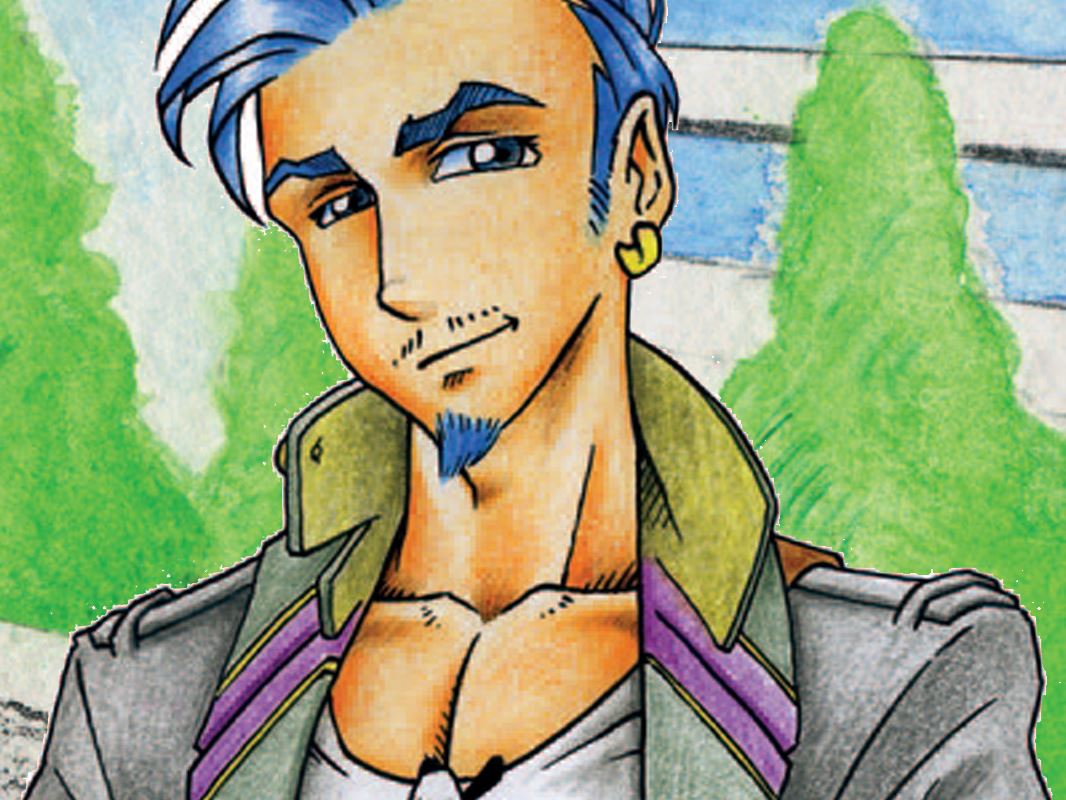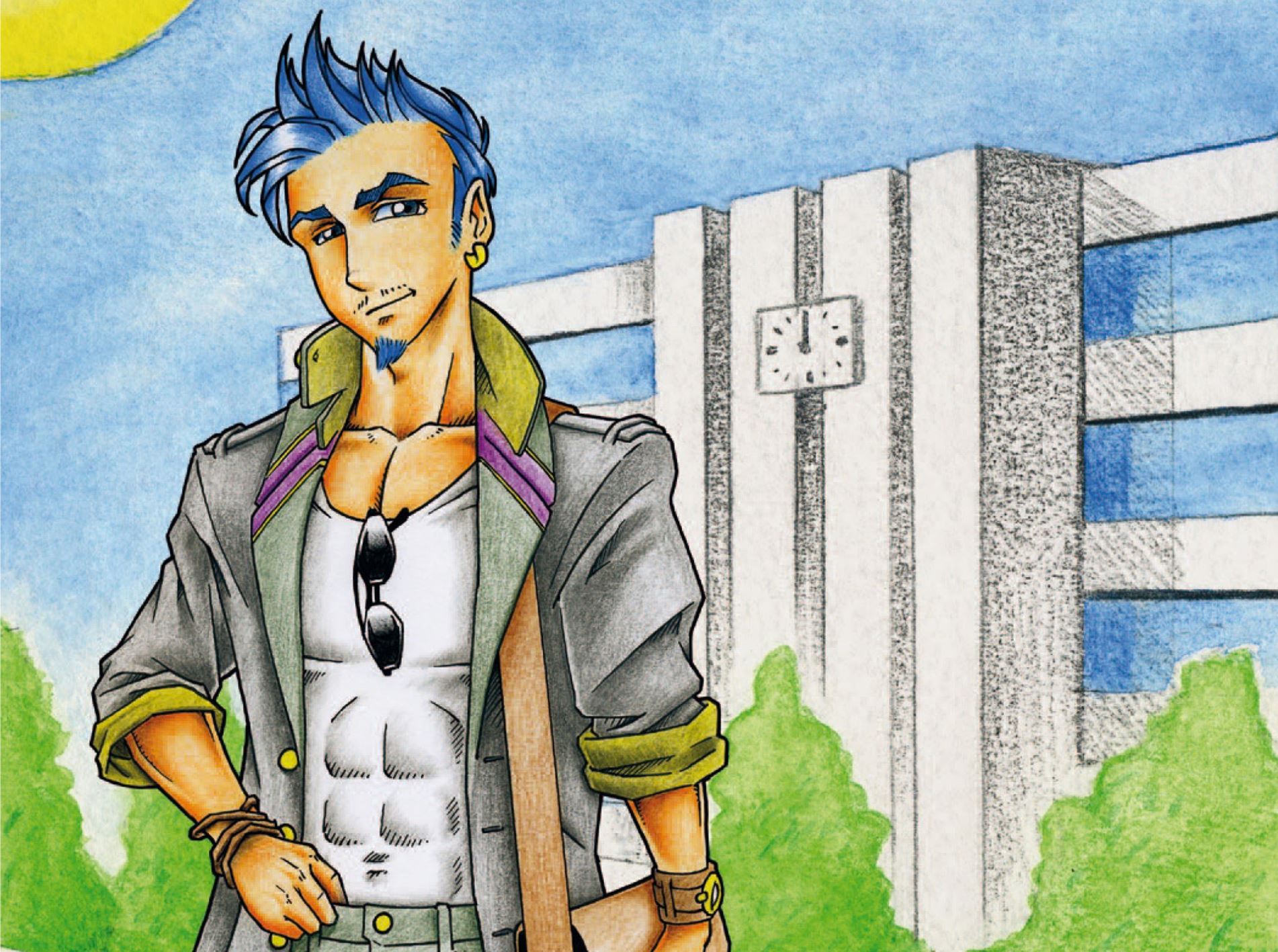- Adults
- Teenagers
- 120 min
What you need:
Colour pencils Art Grip Aquarelle, India Ink Pitt Artist Pen S, Graphite pencil Grip 2001 2B, Brush
no matter who plays the principal role, everyday college life provides many possibilities for a variety of stories and subjects. Our main figure is a typical heartthrob – a mixture of a friendly sunny boy and the cool macho type. The mischievous smile, a slightly arched eyebrow and dark sunglasses give him a slightly arrogant air. He likes to show off his sporty body. The many accessories show that styling and appearance are very important to him.
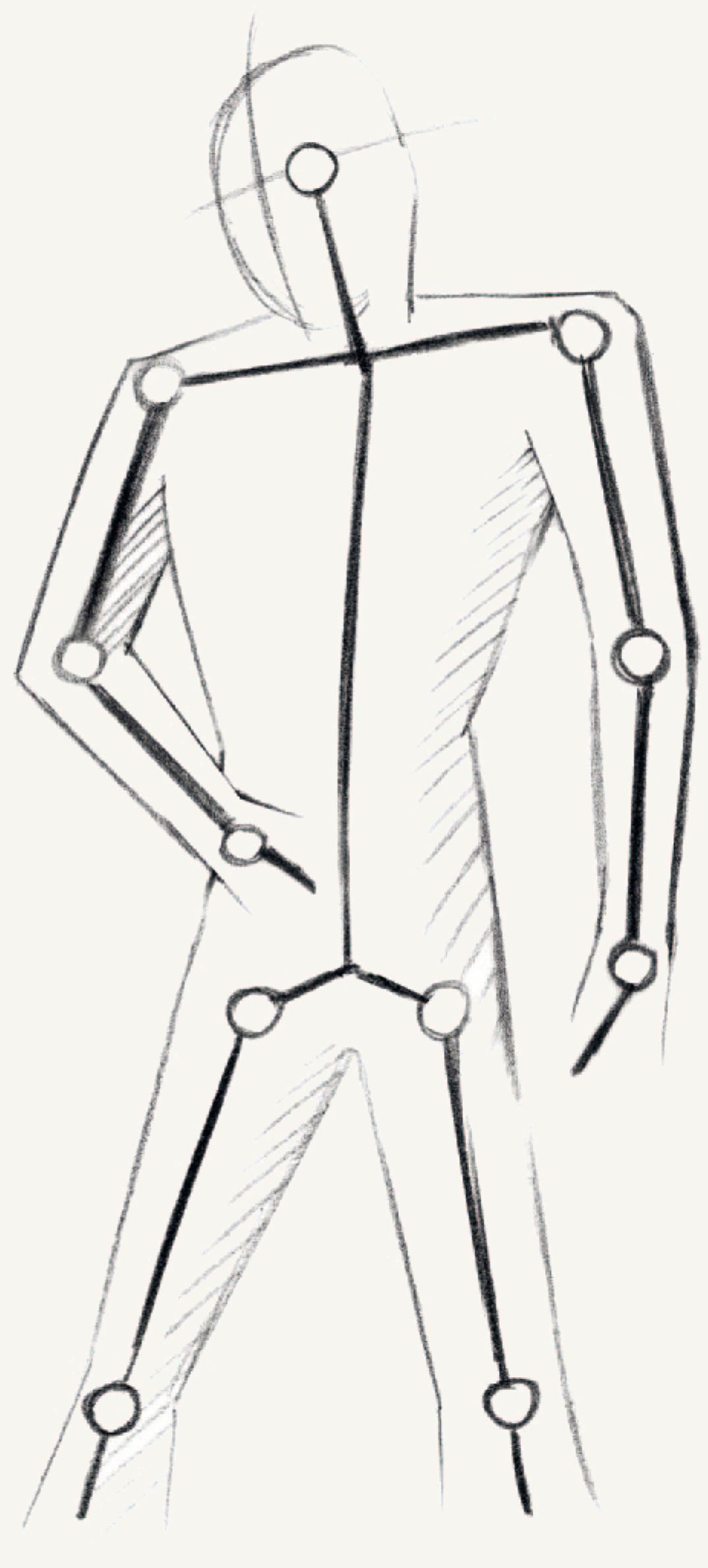
Step 1
To draw your figure, first make a preliminary sketch on the A4 drawing paper. It is best to start with a simple stick figure and then add the joints to it. This is important so that you can work on an anatomically correct bodily posture right from the start, and one that is also appropriate for the character. Our principal figure is always at pains to look cool and relaxed, therefore he is holding his head at a slight angle and his right arm is loosely resting on his hip. His weight is resting on his left leg. You can underline his sporty physique with broad shoulders and an upright torso. Your drawing should not completely fill the A4 paper, because otherwise there will not be enough room for the background later on.
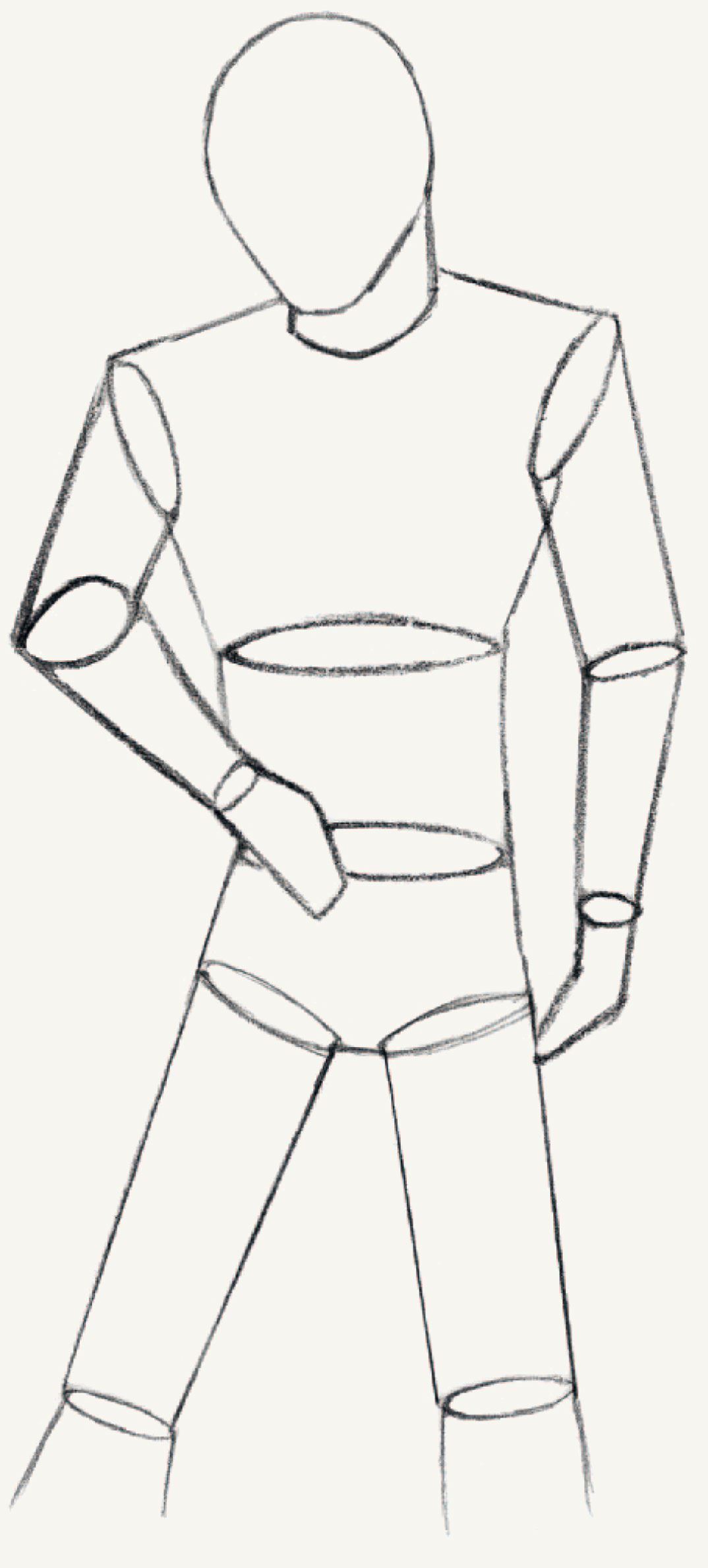
Step 2
Now give your college boy a little more plasticity by means of basic geometrical shapes such as cylinders. When doing this, make sure you draw the proportions and the overlaps so that there are not too many lines meeting at one point. Also, you need to consider how much volume the arms and torso need in order to give his stature the presence you want, but without excessively falsifying the correct proportions at the same time.
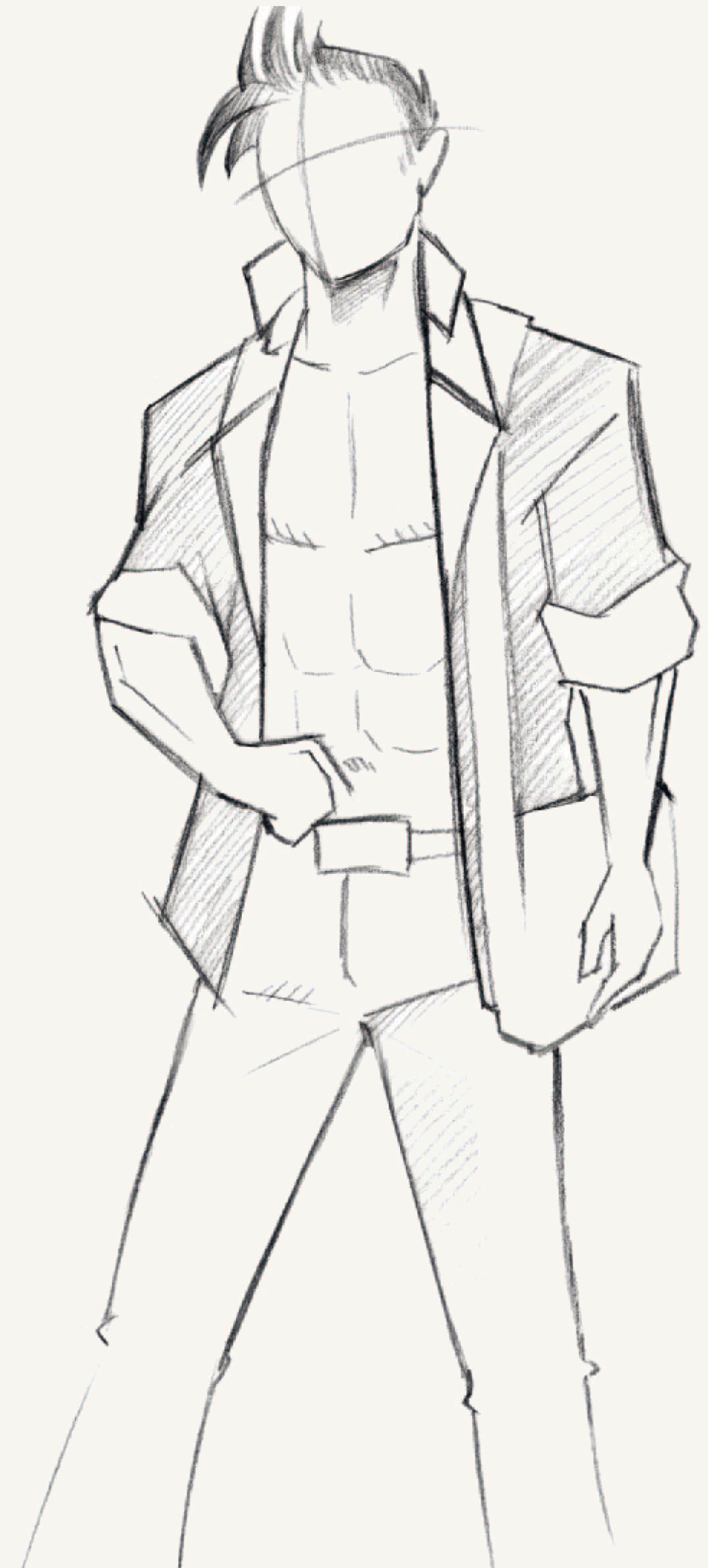
Step 3
His hair and school bag, as well as the trousers and jacket of his school uniform, are drawn in a simplified way. Also give a hint of a six-pack so that your college boy will look even more athletic. If the new details give rise to undesirable overlaps, you can improve the position of the limbs a little more at this point.
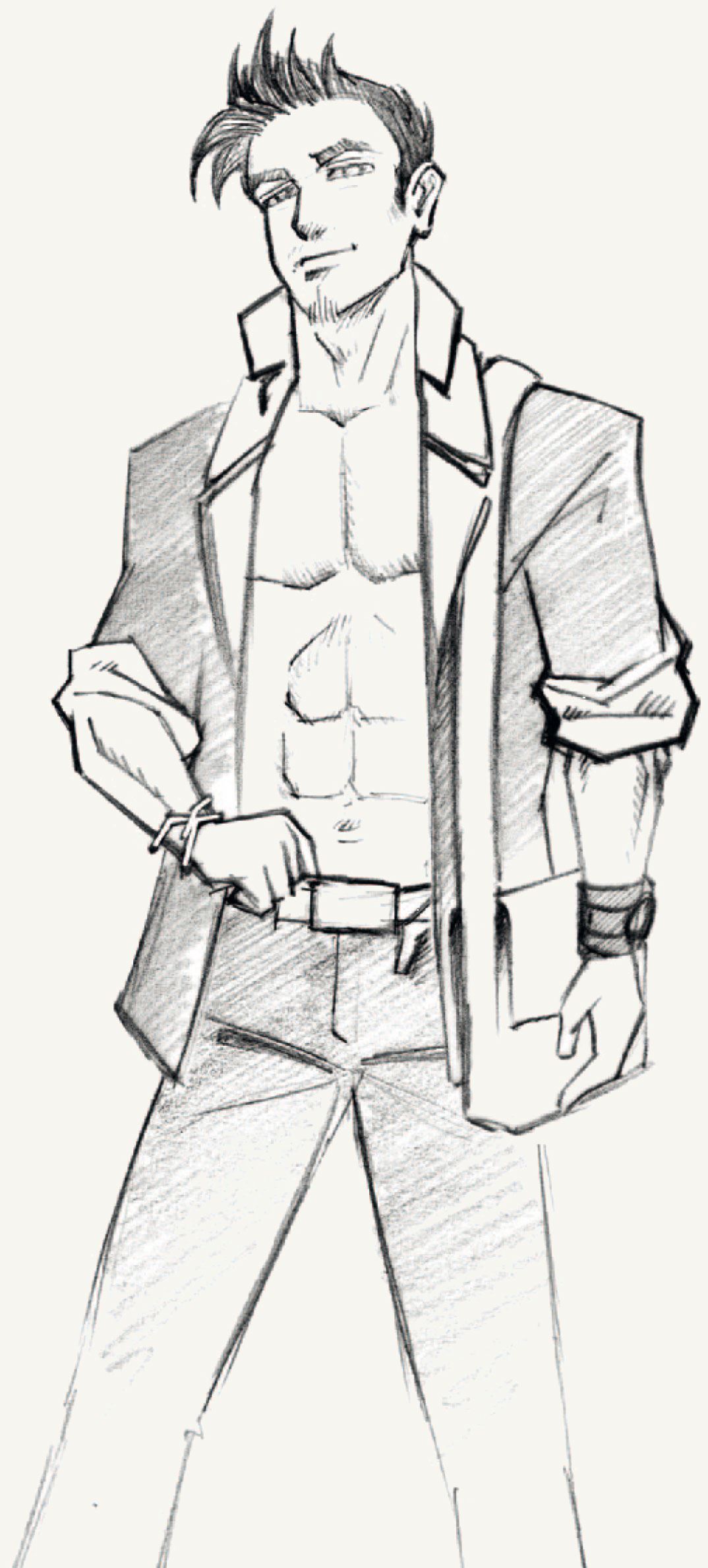
Step 4
In the next step, build up the figure completely as shown in the picture. Now you have completed your preliminary sketch. This will help you to be able to estimate the impact of the small details more effectively. As a result, it will be easier for you to decide which areas should later be coloured darker or lighter with the coloured pencils in order to achieve a result that is as plastic as possible. Also, you will find it easy to experiment with changing the facial expression of your college boy by varying how he holds his head or the shape of his eyebrows and the corners of his mouth.
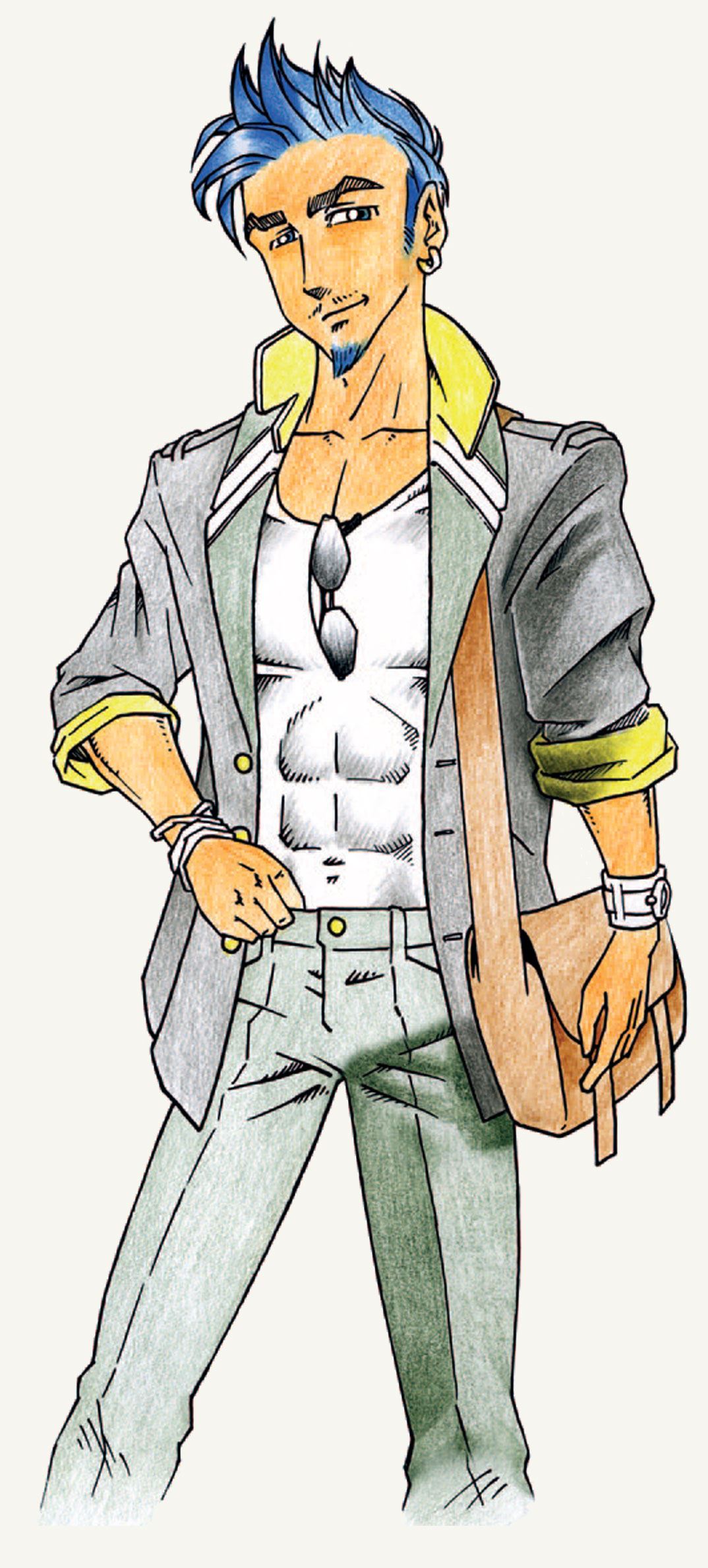
Step 5
You can make your final alterations to the preliminary sketch. Our schoolboy‘s head is now a little larger and he has been made a bit more slender in the waist so as to emphasise the breadth of his shoulders and his sporty stature more. Additionally, the jacket of his school uniform above all has been given more embellishments and the folds of the material on his sleeves have been made as realistic as possible. Following this, use graphite paper to transfer the subject to a sheet of A4 watercolour paper. Work over the lines again with a fineliner pen and erase the pencil lines that are still visible.
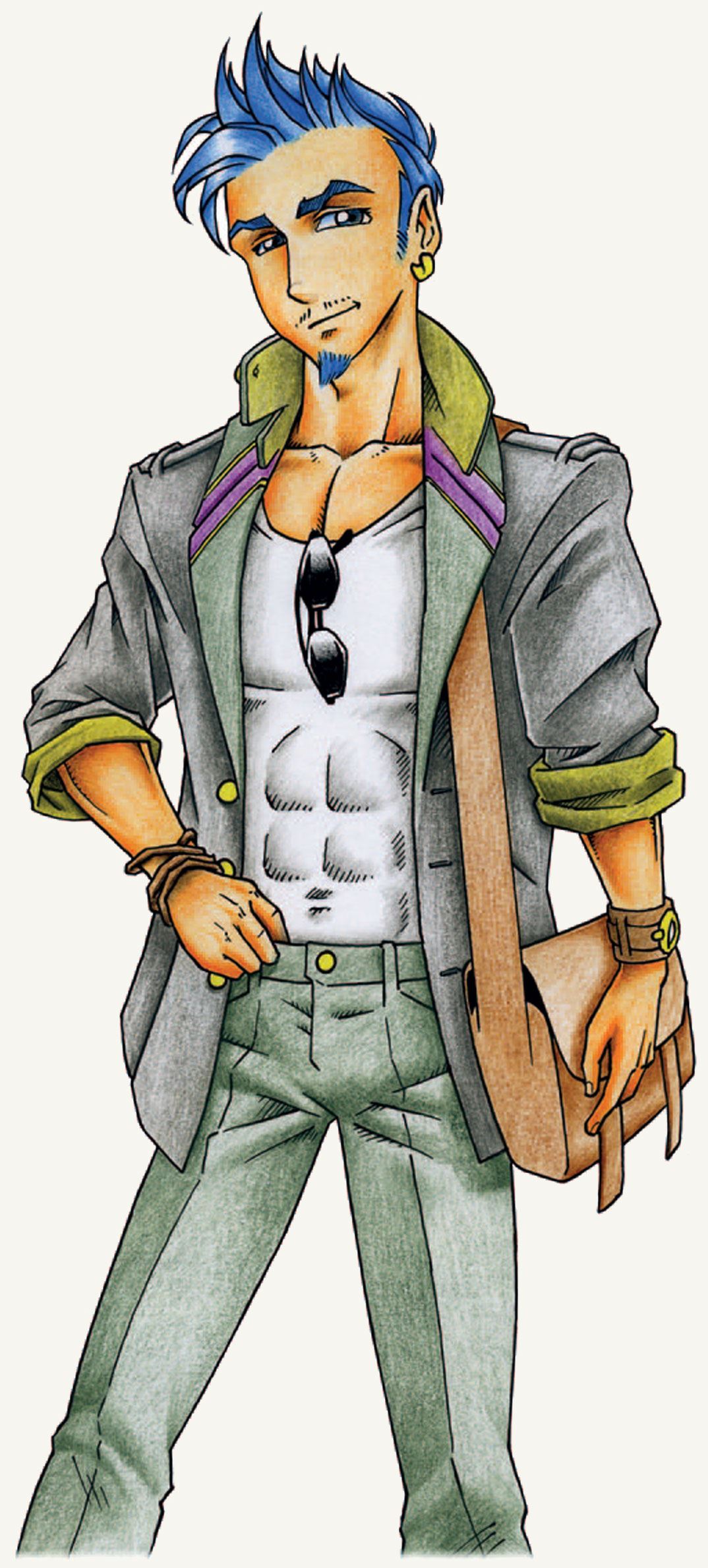
Step 6
We recommend placing your watercolour paper on an unused sheet of paper. This will prevent the structure of the underlying surface (e.g. table panel) from pressing through. On the fineliner drawing, ground out the individual surfaces using the Art GRIP watercolour pencils. When doing this, hold the pencil as flat as possible and stroke it carefully over the paper in order to fill in the individual areas. You should resharpen the pencil from time to time if required. To give a greater impression of depth and three-dimensionality, you can reduce or increase the intensity of colour application at particular points in the picture. You can see the difference in the application of colour on the hair which is achieved by painting over with a wet brush. This method enables you to create various surface structures.
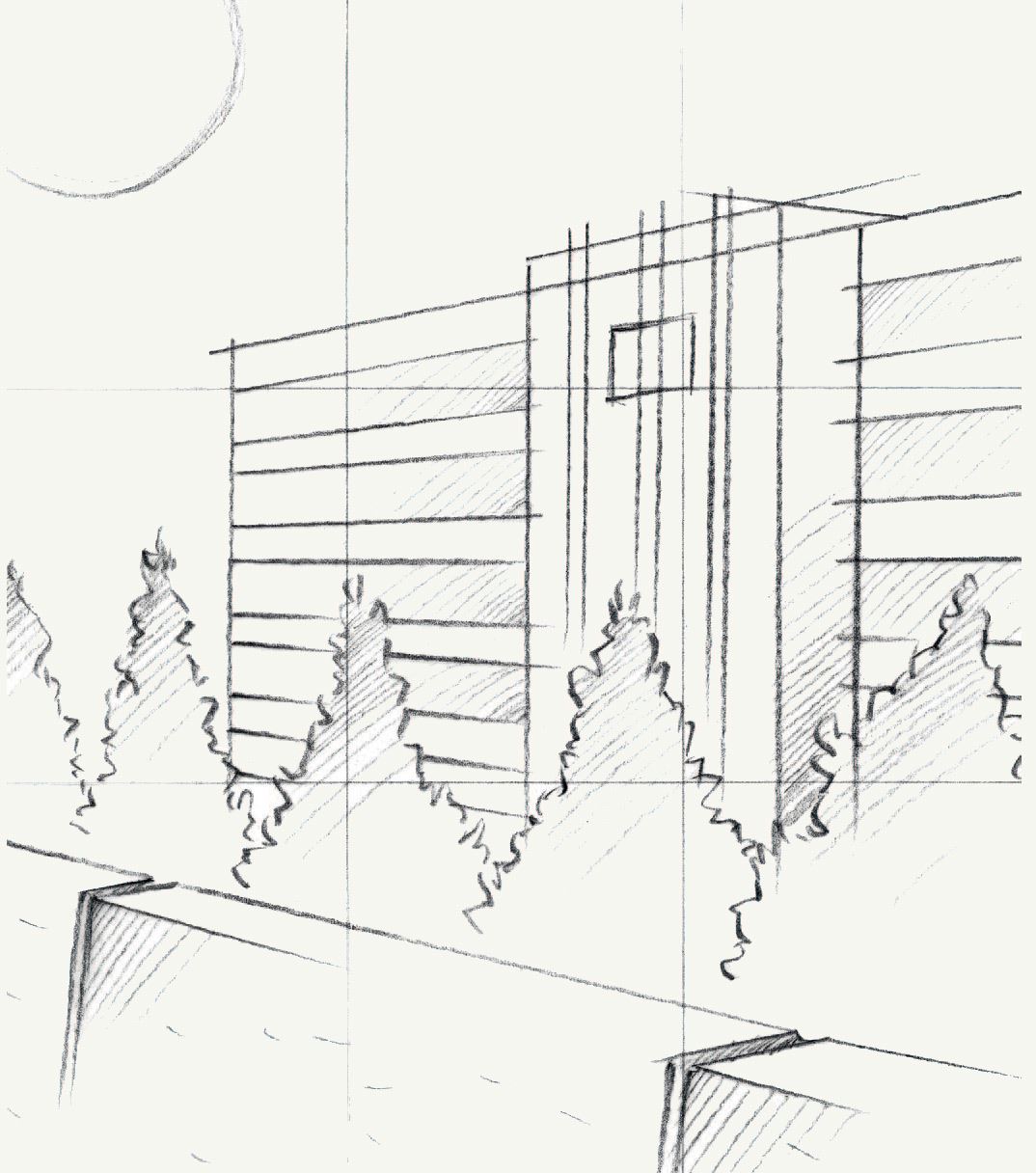
Step 7
The next step is to colour in all the elements of the figure as shown in the illustration. Don‘t forget to vary the intensity of colour application. The ability to paint over Art GRIP watercolour pencils with water means you can blend the eight colours provided to create many additional shades, and in this way easily produce shadows and plasticity. For example, you can darken the pure yellow shade for the lining of the jacket, thereby adapting it to the other more natural shades of the school uniform. The different materials of the clothing and accessories can be indicated by different colourings.
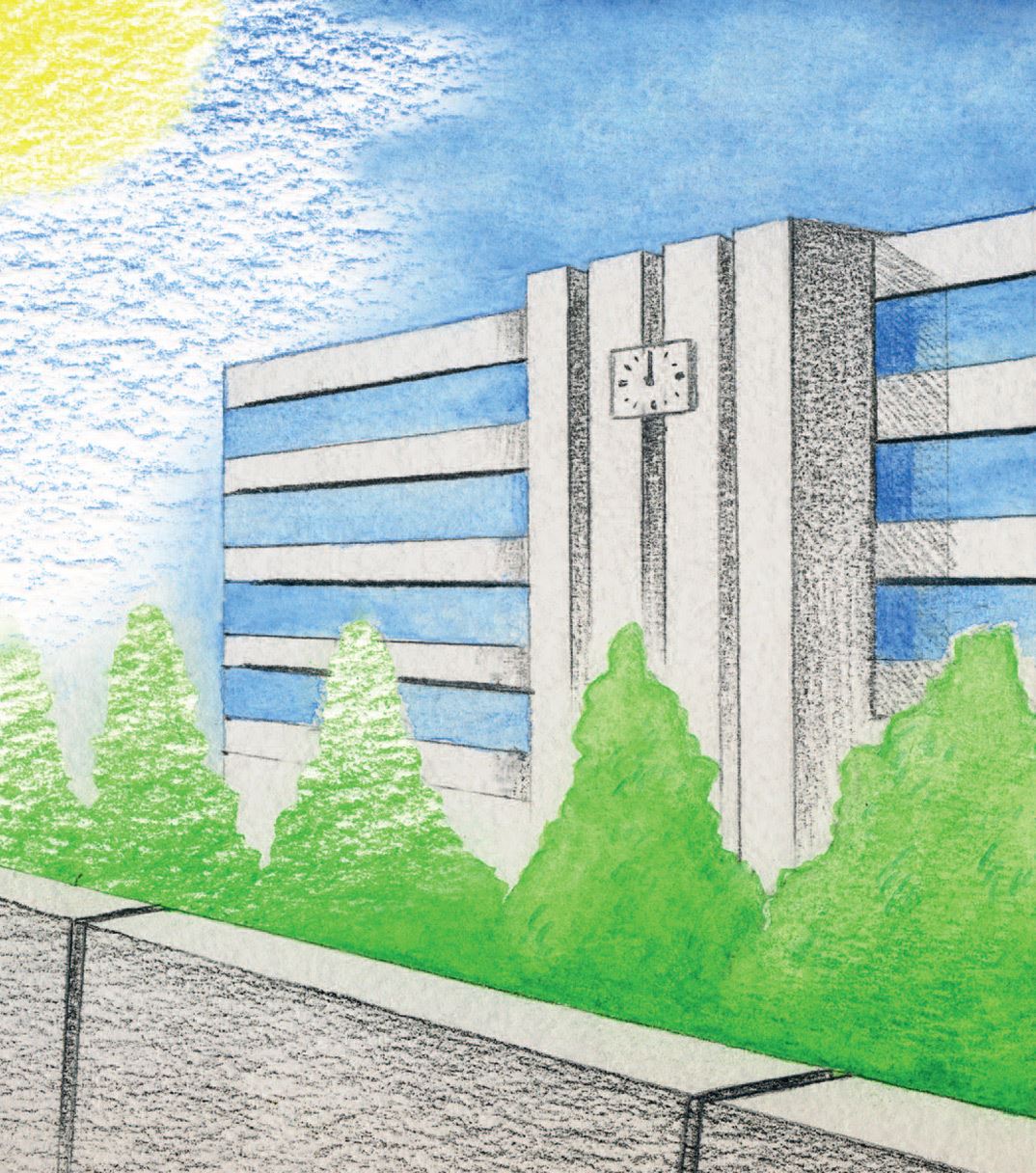
Step 8
Now draw in the background image, once again by making a preliminary sketch on a second sheet of A4 drawing paper. Use a grid to outline a school building comprised of simple shapes, of the kind you often see in Japanese mangas or animes. The urban scene is rounded off by a dividing line of trees and a short wall.
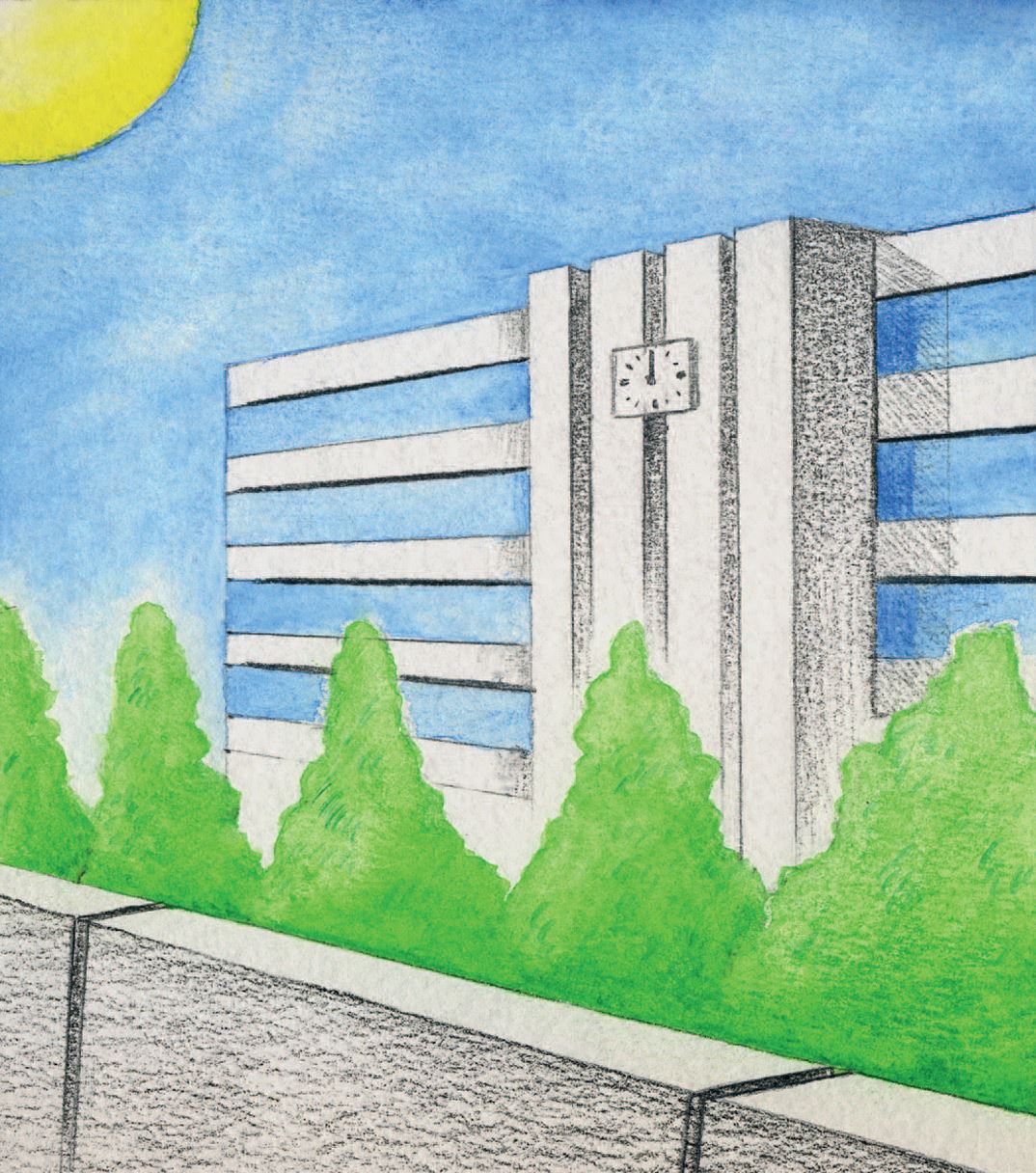
Step 9
When you are satisfied with your preliminary sketch, draw it out neatly a second time on a new sheet of A4 watercolour paper. Then ground out the background according to the illustration using the Art GRIP watercolour pencils. The shining colours give the impression of a beautiful sunny day. Then work over the sun, bushes, window panes in the building and the sky with a moistened brush.
Step 10
As soon as the background has dried, apply additional details to the bushes and firm out the outline of the sun. Also draw in the shadows cast by the school building. These colour applications are not painted over with water.
PDF for Download


